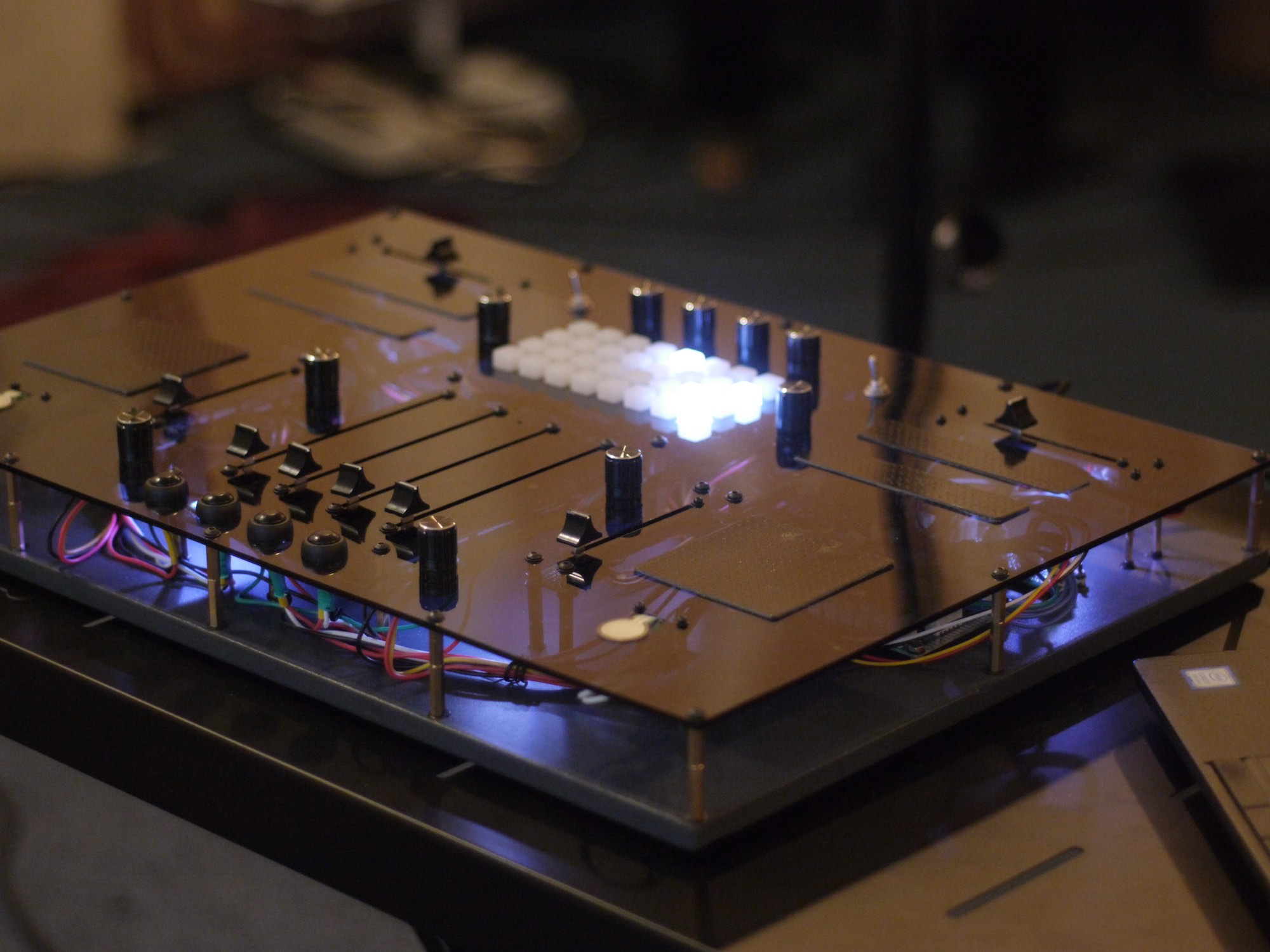Sabbia: live electronics
An instrument for electroacoustic improvisation
In this post Alfredo Ardia talks us through the custom instrument he built for his improvisation duo Sabbia with drummer Vasco Furtado. His live electronics setup includes two fully custom controllers build with Trill sensors and various other components. Here’s it in action!
Buiding an instrument for Sabbia
Sabbia is a free improvisation project in collaboration with drummer Vasco Furtado which focuses on the exploration and extension of percussive sounds through the use of live electronics. In this post I talk through the custom instrument I created for live sampling and manipulation of sound as part of this duo.
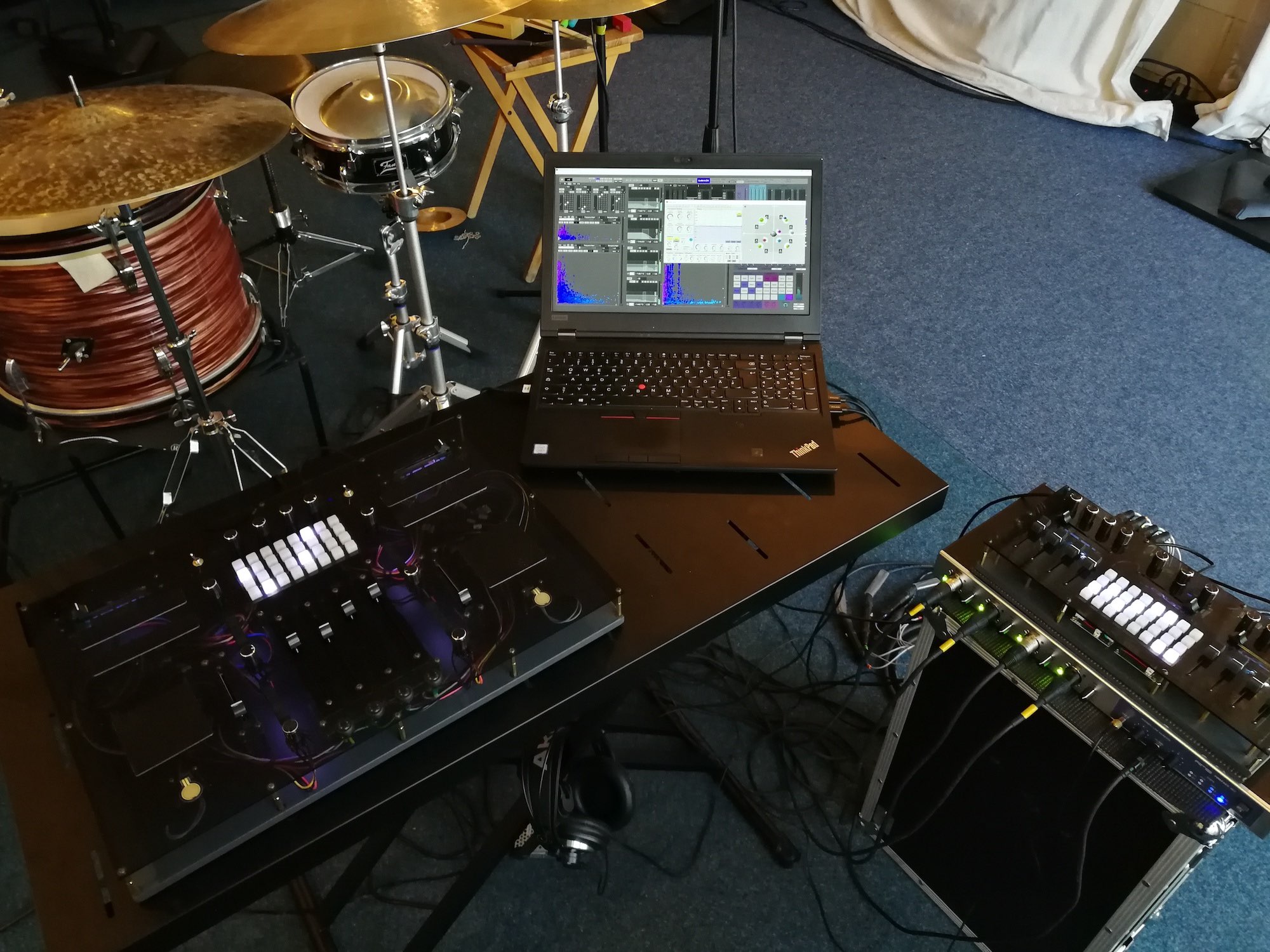
The Sabbia set up including drums, laptop running MaxMSP, and the two custom designed controllers.
The instrument is made of two custom designed controllers which interface with sound synthesis software programmed in MaxMSP. Both controllers use a mixture of the following components: Arduino Micro, multiplexers to expand the number of inputs, some LEDs, two Adafruit NeoTrellis and different types of input components such as Trill sensors, force sensors, and sliders. All of these components are then all mounted on acrylic and wood panels separated by spacers.

All the components used in this instrument.
Controlling multichannel sound
The smaller controller which I place on the righthand side has the controls for the input levels from the drum kit, and output levels via a semi-automated sound spatialisation system. This make use of the Spat5 objects from IRCAM to diffuse sound in real time across a multi-speaker sound system.
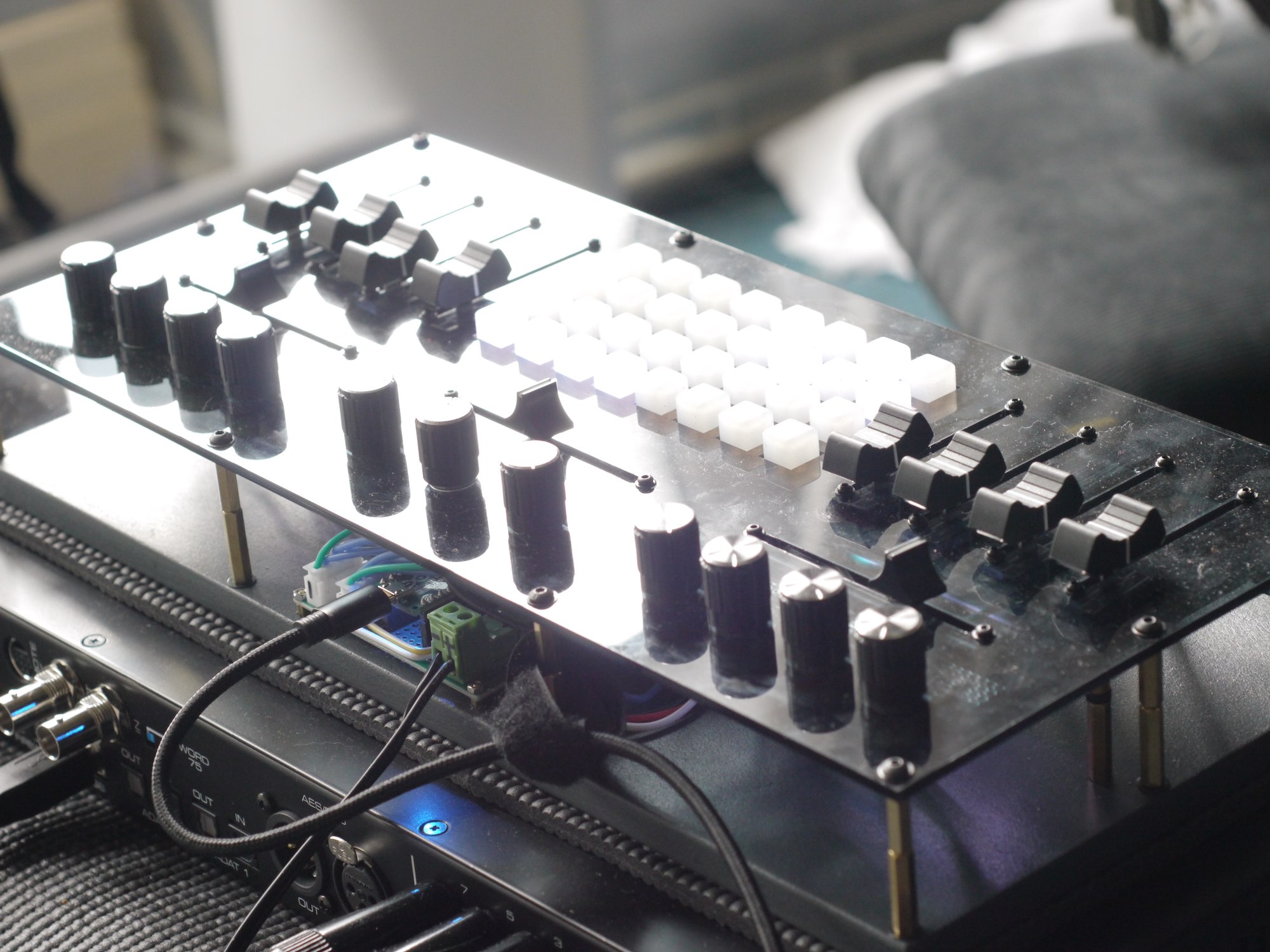
The smaller of the two controllers for controlling live spatialisation of the sound.
Expressive sampling
The larger interface is actually the more interesting of the two and controls all the sound manipulation and generation. This interface is based on four samplers, four CataRT, two multichannel spectral delays and a chain of long delays.
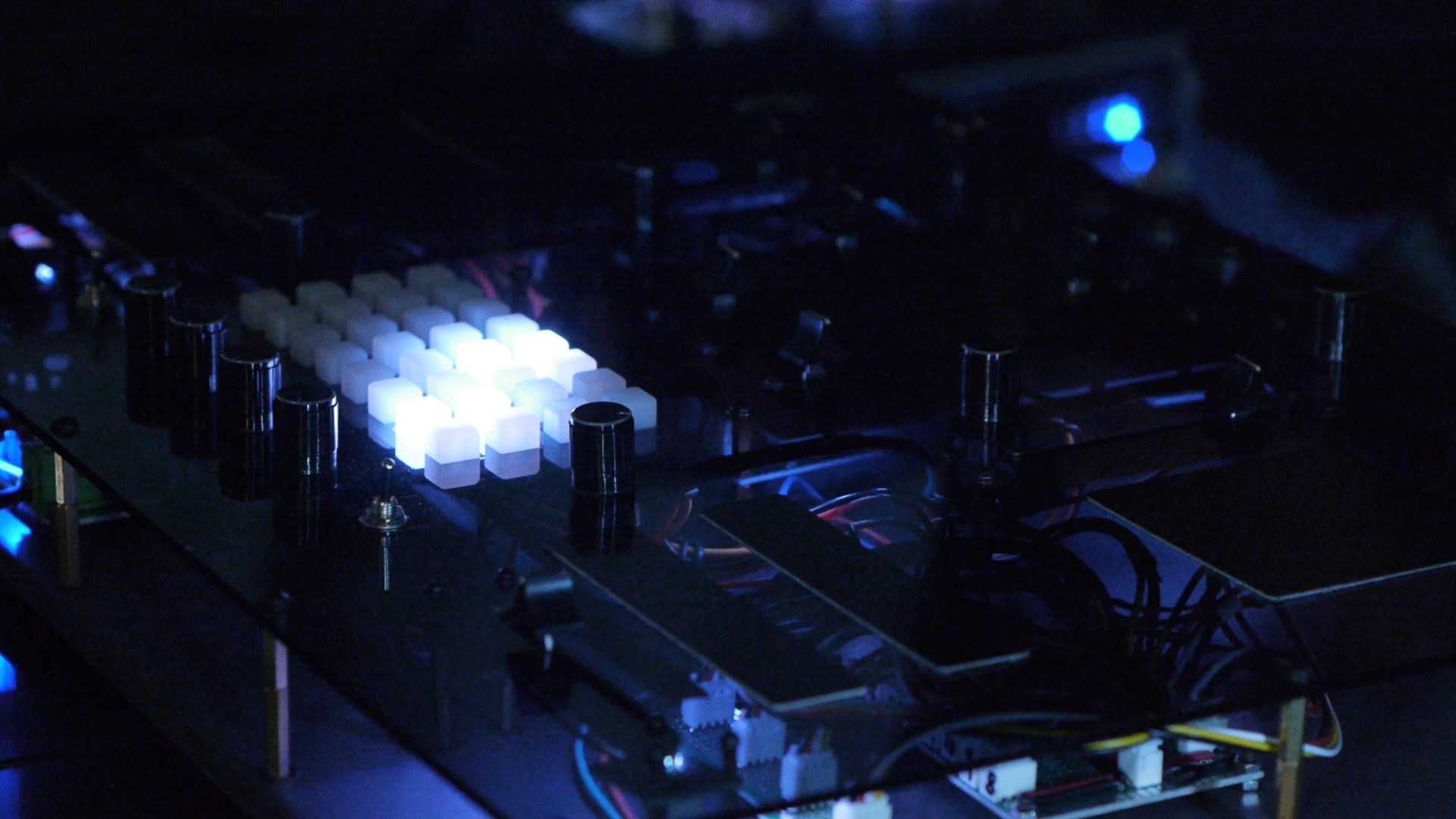
The larger of the two controllers for controlling sampling, synthesis and effects.
During live performance I use the samplers to record live what Vasco is playing on the drums and to do some simple processing such as looping, transpositions and volume controls. To control the transpositions I use the Trellis pads which are really fun to play with and also have visual feedback thanks to the built-in LEDs.
The beauty of a slider
For the volume control I choose the longest sliders I could find which already made a big difference to live performance in comparison to a standard MIDI controller: with proper sliders you can really transform a basic control such as volume into an expressive musical parameter.
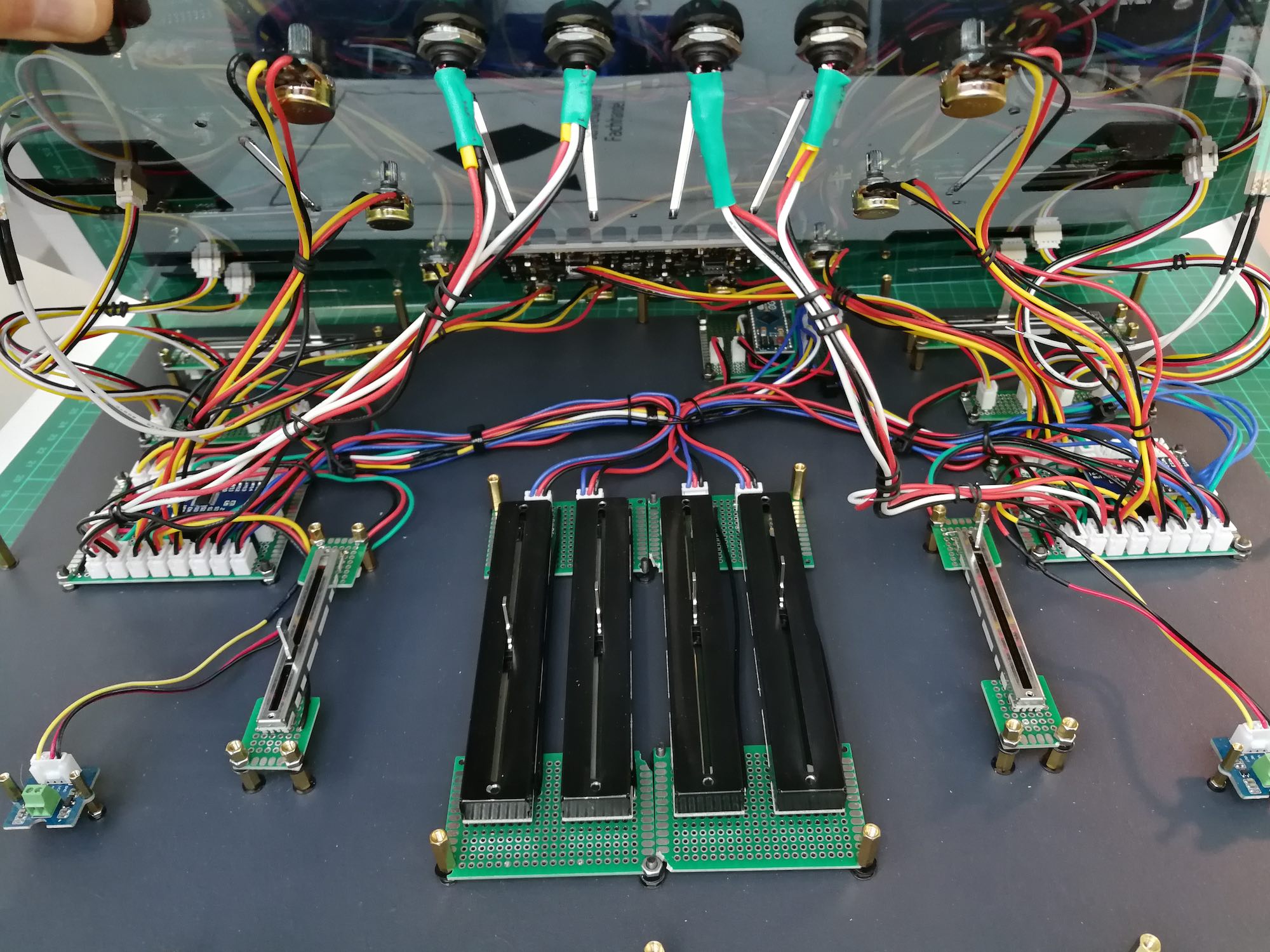
The insides of the controller showing the sliders.
This extra control is actually one of the main reasons why I prefer to build my own controller instead of buying an off-the-self one. Most commercial products are too standard and made for general use and can never really give you the feeling of playing a musical instrument.
Touch sensing with Trill
The most expressive part of the instrument is the one controlled by the Trill sensors which are really fantastic for touch gestures. Trill Squares and Trill Bars are here used to control the mosaicing of pre-recorded sounds using concatenative synthesis in CataRT – an amazing system developed by Diemo Schwartz.
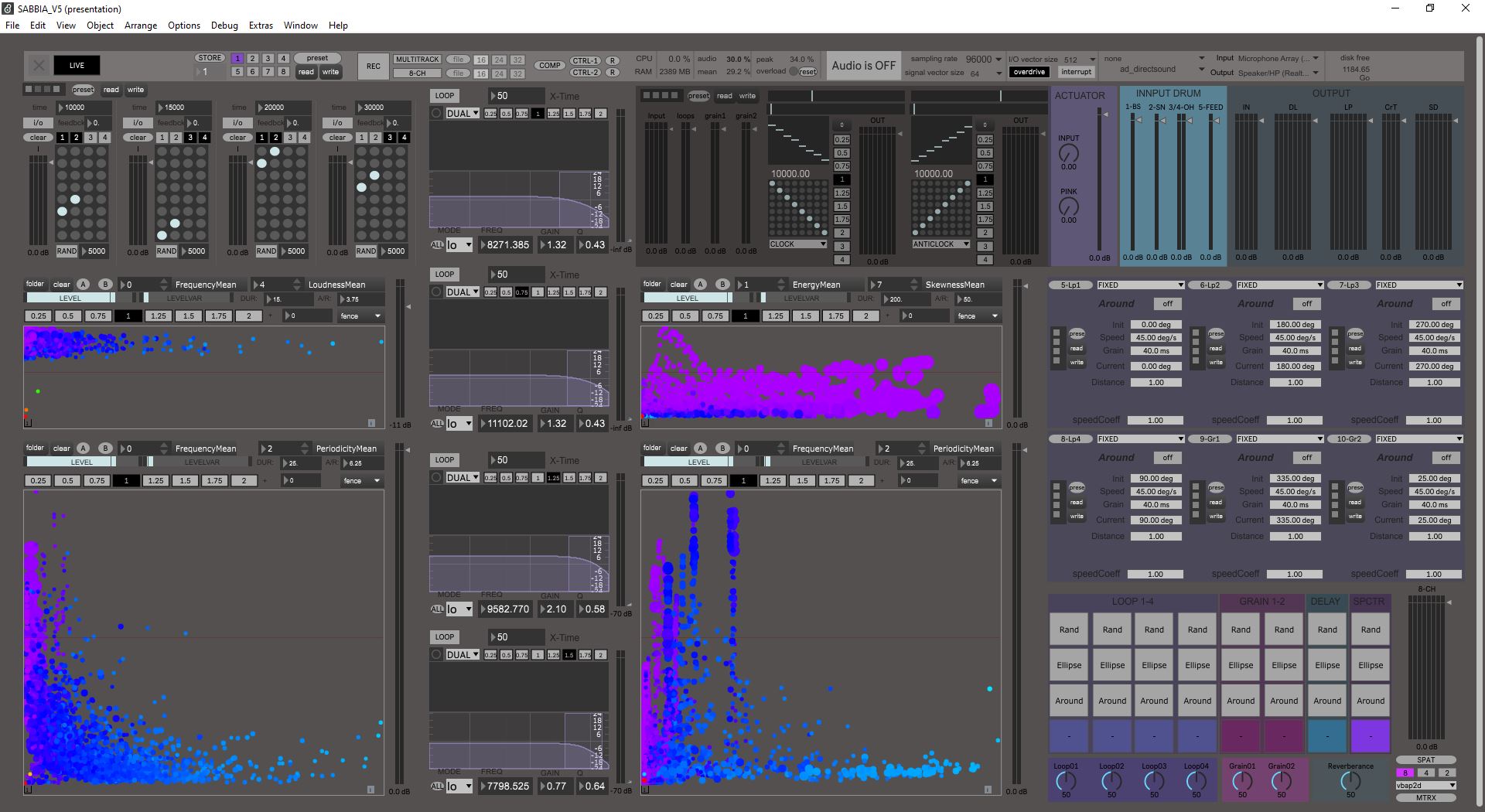
The GUI for the sampling, concatenative synthesis and effects created in MaxMSP.
For this the Trill sensors are just perfect, because you can use them to control the XY position, but also because you can calculate the speed of the movements or use the size of the touched area to control parameters such as pitch or the sample’s grain length. When you start to combine all this information you can get very complex and expressive types of control from a single sensor.
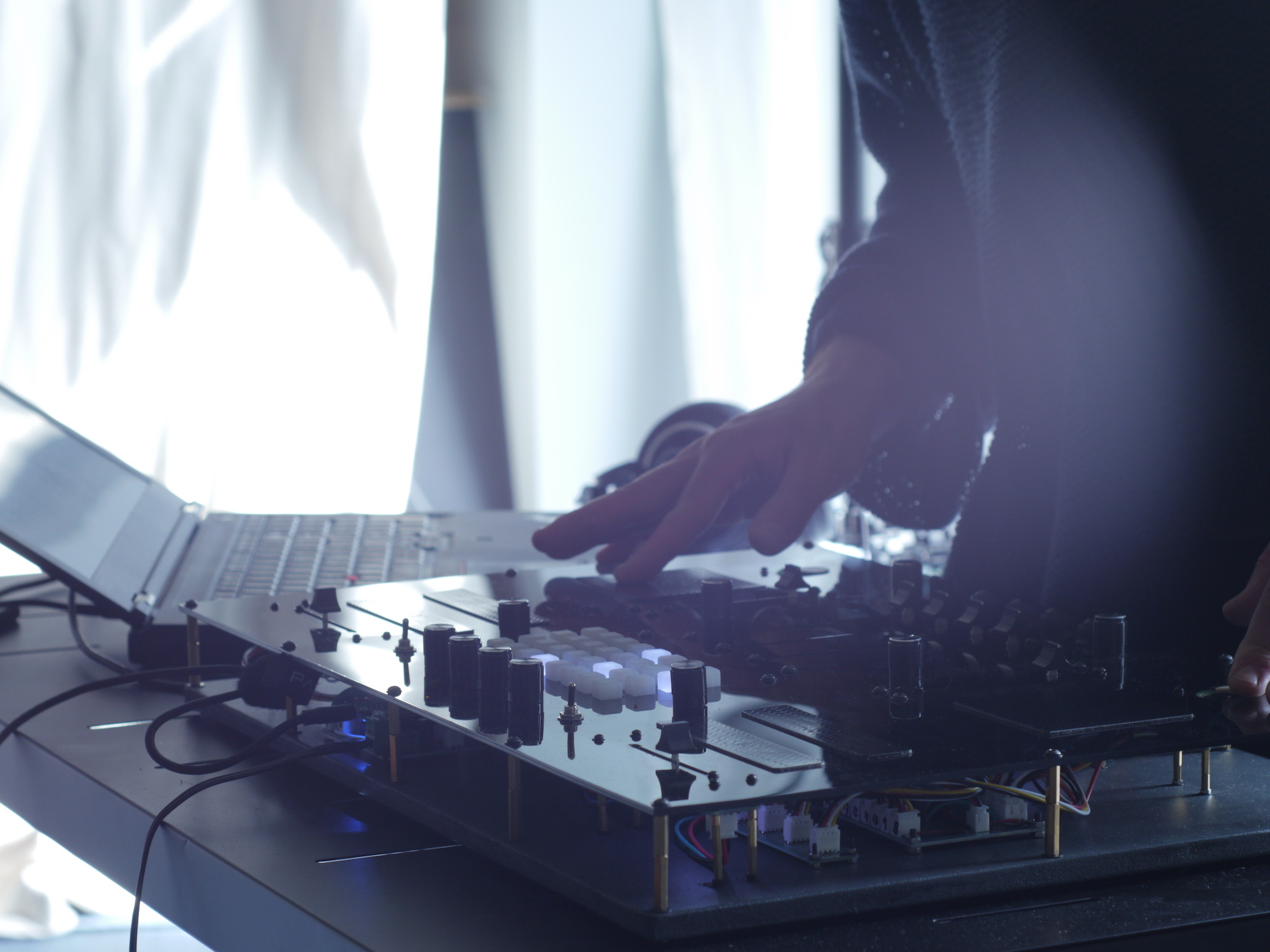
Controlling the MaxMSP programme with the touch sensors of the full instrument.
Finally there is the GUI which I programmed in MaxMSP to give visual feedback of levels and movements but also to do all the mapping and calibration of the controllers, so I can easily assign or scale the parameters and save/recall different presets.
About Alfredo Ardia
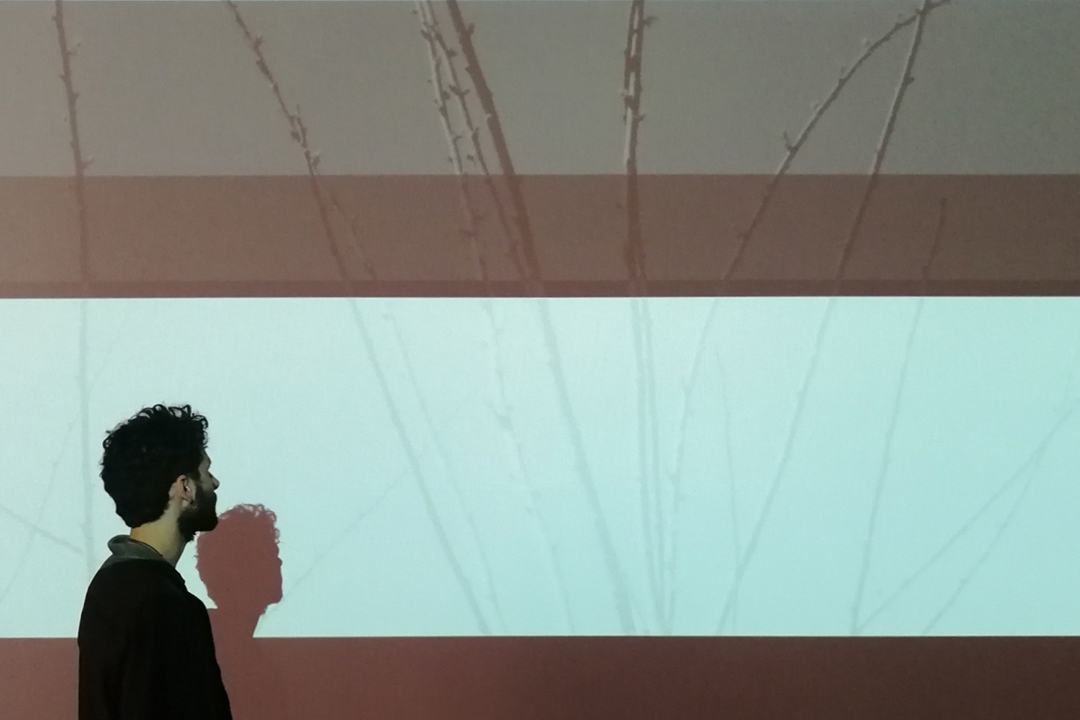
Alfredo Ardia - Italy, 1989 - is an artist and musician based in Cologne (Germany). Inspired by nature and the surrounding environment his practice combines sound, materials and new media to explore the relationships between humans, nature and machines. Generative sounds, field-recordings, natural substances, electronic systems and custom made instruments are the elements with which he composes. His works include sound installations and sculptures, audiovisuals, electroacoustic, soundscapes composition and live performances.

